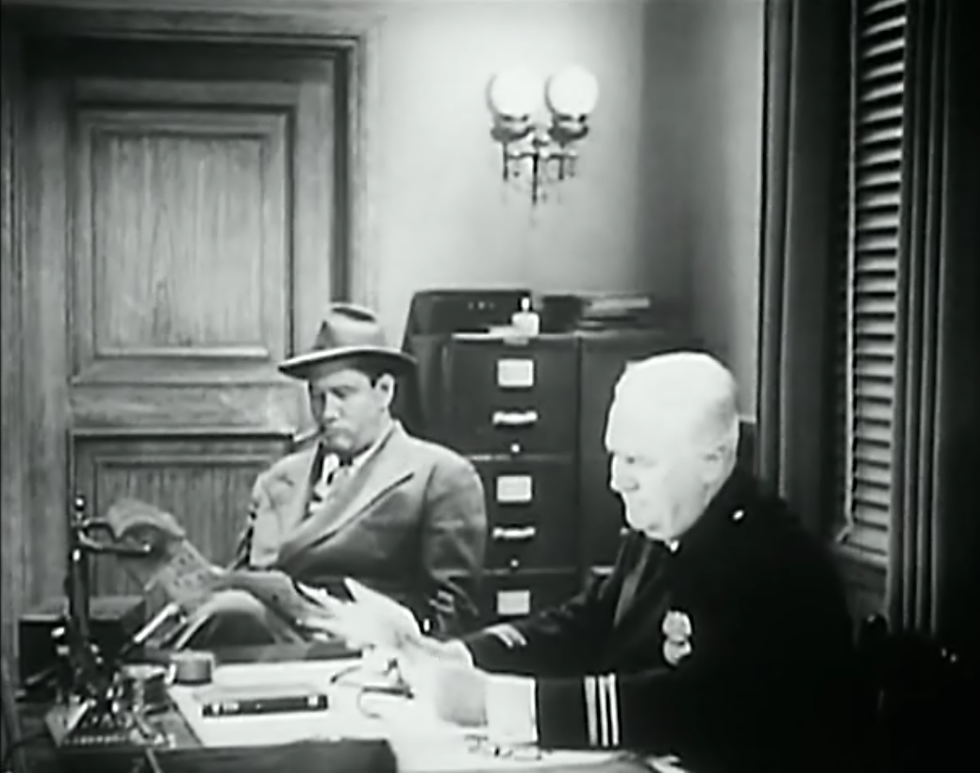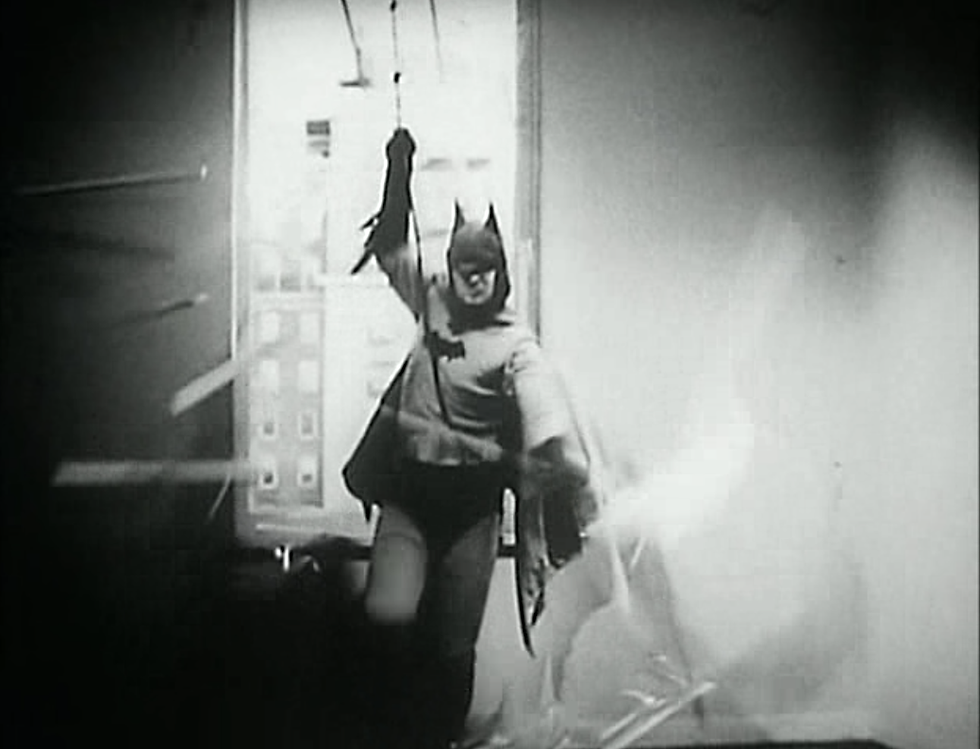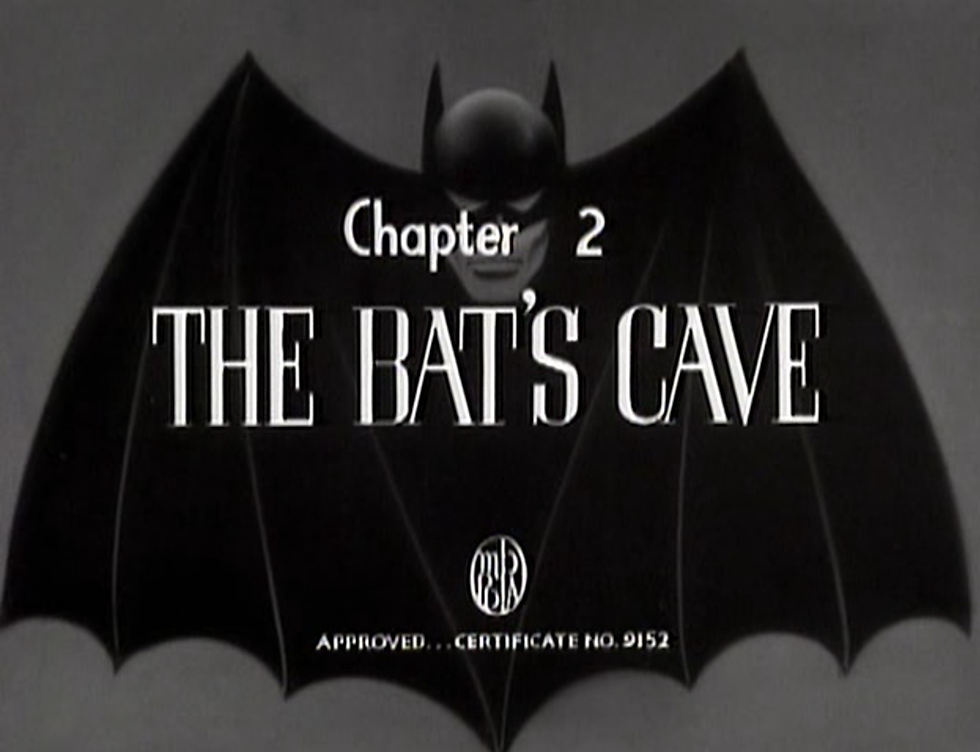Consume All Media! Batman: "Chapter One: The Electrical Brain"
- Joseph Heath
- Jul 24, 2025
- 7 min read
Joe Heath is a big fan of comic books and watching things in order. So they made this spreadsheet containing every serial, short, film, television episode, commercial, motion comic, and web series based on a comic book. Now they're watching them all. Previously, Joe watched hawkmen. This time, Joe watches Batman.
Batman

Film Info
Release date: July 16th, 1943
Studio: Columbia Pictures
Written by Victor McLeod, Leslie Swabacker, & Harry L. Fraser
Based on the National/DC Comics character created by Bill Finger & Bob Kane
Produced by Rudolph C. Flothow
Directed by Lambert Hillyer
Writer Highlights
Harry L. Fraser (1889-1974)
Other comic book media credits: Captain America (1944)
Creator Highlights
Bill Finger (1914-1974) Other comic characters adapted: The Green Lantern & Superman’s Smallville love interest Lana Lang Other comic book media credits: Wrote two episodes of Batman (1966) & a segment of The New Adventures of Superman (1966)
Bob Kane (1915-1998)
Other comic book media credits: Kane appears as a newsboy in the first chapter of this serial and went on to be a project consultant on Batman (1989), Batman Returns (1992), Batman Forever (1995), & Batman & Robin (1997).

Playing the titular character is Lewis Wilson in his debut role. He acted in a few more films afterwards before leaving show business for General Foods in 1954.

Batman went on to be in a sequel serial, as well as many popular television shows and films. So how much of the character is established in this initial outing?
Let us look at the 1943 serial in more detail to find out.
Note: Batman is the only serial on Wikipedia with release dates listed for each individual chapter instead of a general release date for the whole serial, so I'm going by that.
Batman: “Chapter One: The Electrical Brain” - 26:18 (Available on Archive)

Release date: July 16th, 1943
A narrator (Knox Manning) introduces us to a very bored looking Batman sitting in his “Bat’s Cave.”

Actor Highlights
Knox Manning (1904-1980)
Other comic book media credits: Manning was Columbia Pictures go-to narrator and went on to narrate Hop Harrigan (1946), The Vigilante (1947), Superman (1948), Congo Bill (1948), Batman and Robin (1949), Atom Man vs. Superman (1950), & Blackhawk (1952). His narration style in this serial was so influential, it became the basis for the narration in the 1966 Batman television series.
This serial also introduces the concept of the Batcave (or as it’s referred to here, The Bat’s Cave). Artist Bob Kane visited the Bat’s Cave set during filming and mentioned it to writer Bill Finger, who proceeded to include it in a Batman daily newspaper strip he was writing at the time. It premiered in the strip in October 1943 before migrating to the comic book in January 1944.
In the serial, the cave is mostly just a bat-filled room with a desk in it, connected to a lab that’s accessible through a secret entrance in a grandfather clock (which also migrated to the comics). However, there is no T-rex or giant penny at this point.
After introducing us to Batman and the Bat’s Cave, the narrator introduces Robin, Batman’s partner (Douglas Croft) and that seems to cheer up Batman.

At the age of 16, Douglas Croft was the youngest actor to ever portray Robin the Boy Wonder. Prior to this, it appears as though his film career mostly consisted of portraying boy versions of other characters.

After their introductions, Batman and Robin catch some bad guys and call Police Captain Arnold (Charles C. Wilson) to collect them.

The character appears to be based on the character Commissioner James Gordon from the Batman comics. Though Police Captain Arnold seems a lot more inept. He alternates between taking credit for Batman’s work and being annoyed by him.
Batman tells Captain Arnold that he’s tied up some bad guys and that he should come and get them. He’s also marked them with a bat tattoo on their forehead.

He does this to a handful of criminals. I have no idea if they’re permanent, but they do look pretty cool.
Batman and Robin then jump in their black 1939 Cadillac Series 75 convertible and leave.

I guess this is our first Batmobile. Batman and Robin drive around in it as well as millionaire playboy Bruce Wayne and his ward Dick Grayson. I wonder if they know each other...
Bruce and Dick go to see Bruce’s girlfriend, Linda Page (Shirley Patterson).

Actor Trivia
Shirley Patterson (1922-1995)
Shirley Patterson won the 1940 Miss California Pageant, but was later disqualified when it was discovered she was underage. She went on to act in many films until a skiing accident in 1958 severely broke her leg, effectively ending her career.
In the comics, nurse Linda Page was a love interest of Bruce Wayne’s for a brief period of time. She did not approve of his millionaire playboy ways.
And she doesn’t in this serial either. And to be fair, Bruce is kind of a dick.

Even Dick tells Bruce that he might be going too far. But he claims they have to protect their identity in order to secretly work for the government tracking down Axis spies.
Columbia Pictures felt uncomfortable having a vigilante taking the law in his own hands, so Batman and Robin were tweaked slightly to instead be government agents. Government agents who dress up like a bat and a trapeze artist for some reason.
Linda wants Bruce to take her to pick up her uncle, Martin Warren (Gus Glassmire), after he is released from prison.
However, before they can get there, some men kidnap Linda’s uncle. Linda sees them drive past and Bruce orders his butler/driver Alfred (William Austin) to follow them.

William Austin acted in many films opposite such notable people as Clara Bow and Laurel and Hardy, but his role as Alfred is arguably his most influential one. Prior to this serial, the comics version of Alfred was presented as a larger, clean-shaven man who showed up at Wayne Manor one day and declared he was now Bruce’s butler.

But William Austin’s delightful performance must have left an impression as the character soon came back from a holiday resort with a changed appearance to match his live-action counterpart.

Anyway, the Alfred in this serial is apparently a bad driver, because the bad guys lose him fairly quickly.
Meanwhile, we jump over to Little Tokyo and the serial starts to get incredibly racist. The narrator mentions that Little Tokyo has been pretty much abandoned ever since the “wise government” rounded up all the Japanese. Except he doesn’t say “Japanese,” he says a derogatory descriptor followed by a racial slur. This will not be the last time this happens. It’s not entirely surprising considering the attack on Pearl Harbor had happened relatively recently, but it’s definitely uncomfortable to listen to now.
(And this feels like a good time to encourage you to donate to causes benefiting the AAPI community, like Stop AAPI Hate.)
Anyway, Little Tokyo isn’t totally deserted, however. There’s a carnival ride called the Japanese Cave of Horrors that takes you through a series of displays of how awful Japanese people are. It’s a very slow ride that we will see taken in its entirety almost every chapter of this serial.

The ride eventually ends at a secret entrance to a hideout guarded by what appears to be a wax caveman, but is in actuality a real human being.

He mostly just stands there looking ominous.
Once you get past the guard, you place your hand on a screen to get X-rayed. If you have the right markings, you get to enter.

Again, you will see this process over and over and over again throughout the serial.
Once inside, you are in the secret headquarters of Dr. Tito Daka, the Japanese leader of a spy ring played by the Irish actor J. Carrol Naish.

YIKES. This wasn’t the only time he played a character like this, either. Throughout J. Carrol Naish’s career he played so many different ethnicities, he was referred to as “Hollywood's one-man U.N.” This included well-known roles like Charlie Chan and Chief Sitting Bull (twice!).
He was later nominated for two Oscars for his supporting roles in Sahara and A Medal for Benny (for which he did win a Golden Globe). As far as I know, these roles were not quite so racist.
And his role in this serial almost wasn’t racist! Naish was originally cast as Batman’s most popular villain The Joker. It was even on an early poster!

But alas, the filmmakers wanted to make the film more culturally relevant, so he was changed to a Japanese spy. Though he still works in a carnival sideshow, which seems like something the Joker would do.
Tito Daka eventually showed up in a couple of comics in the 80s and again in 2020 in DC’s Crimes of Passion #1.
In this serial, Daka turns people into zombies that he can control with a microphone. Daka shows Linda’s Uncle Martin Warren that he’s turned his old partner into one of these zombies in an effort to get him to work with him.

Warren refuses, so Daka pumps him full of truth serum to get information out of him about where to locate some radium.
The reason Daka needs radium is because it fuels his really cool Radium Gun that can destroy pretty much anything.
A now-zombified Warren is brought with some henchmen to collect radium for the weapon.

The henchmen use the Radium Gun to get into the safe to get more radium and they throw it down a laundry chute.
Then Batman swings in through a window like a boss.

A fight breaks out and two henchmen throw Batman off the roof. Not at all like a boss.

Should you watch it, though? It’s definitely interesting to see Batman and Robin’s first film outing and the actors portraying them do a decent job bringing them to life. Also, a lot of the camerawork in this chapter is particularly good. However, the fight scenes are jumbled and poorly choreographed. Also, Batman and Robin are barely in it, with the serial spending most of its time establishing Daka. Speaking of, there’s also all of that nasty racism. So a real mixed bag. Maybe it will get better?
Tune in next time for Batman: "Chapter Two: The Bat's Cave" (Available on Archive.)







Comments